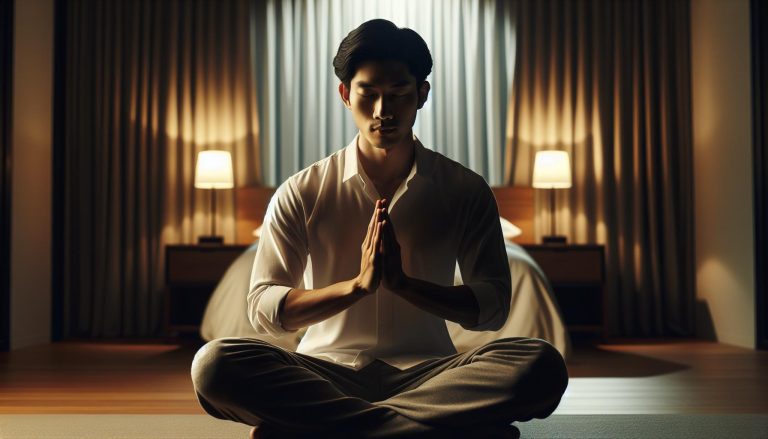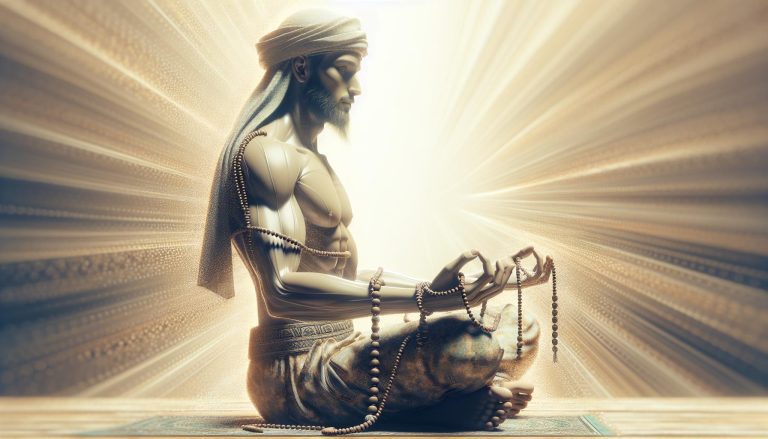Buddhist Chant for Good Luck: Daily Rituals for Positivity
Embarking on a journey to invite more positivity into your life? Buddhist chants for good luck could be the spiritual tool you’re looking for. These ancient mantras are more than just soothing sounds; they’re believed to have the power to transform your fortunes.
You’ve probably heard of the calming effects of meditation, but did you know that incorporating Buddhist chants can amplify your quest for good luck and prosperity? It’s time to explore how these sacred phrases can align your energy with the vibrations of fortune and well-being.
Whether you’re a seasoned practitioner or just curious about the impact of spiritual sounds, understanding the significance of Buddhist chants will open new doors to personal growth and luck. Let’s dive into the world of these powerful mantras and discover how they can enhance your daily life.
What are Buddhist chants for good luck?
When you’re trying to turn your luck around, you might stumble upon the world of Buddhist chants. In essence, these chants are special phrases or mantras that are repeated with the intention of creating positive energy flows. They’ve been a part of Buddhist traditions for centuries, acting as a tool for meditation and spiritual alignment.
These chants often focus on invoking benevolent forces or deities that embody prosperity and good fortune. They are not just random words but are considered to have a vibratory quality that can influence your life’s energy. Think of them like tuning forks for the soul, harmonizing your personal vibe to attract more good luck.
Many people across the globe regularly incorporate these chants into their daily routines. You don’t have to be deeply religious or a meditation guru to use them. Even if you’re just dipping your toes into the realm of spirituality, you can benefit from these mantras.
- Om Mani Padme Hum, for instance, is a well-known chant believed to bring forth wisdom and compassion—qualities that can certainly lead to better luck in your endeavors.
- Om Tare Tuttare Ture Soha is another powerful chant said to remove obstacles and grant wishes, potentially giving your luck a serious boost.
As you start to use these mantras, it’s key to approach them with a clear mind and pure intentions. Sit comfortably, breathe deeply, and let the mantra resonate within you. With repetition, you’re not just saying the words; you’re embodying their essence and setting the stage for positive changes.
By integrating Buddhist chants for good luck into your daily practice, you might find yourself experiencing a shift in how you perceive and react to the world around you. The ripple effect of positivity can often lead to what you’d call good luck, seemingly drawing in a tide of favorable events and opportunities.
The history and significance of Buddhist chants

If you’re seeking to understand how chanting came to be a cornerstone in Buddhist practice, you’re in the right place. Buddhist chants have roots that stretch back thousands of years. They’re not just phrases but resonating echoes of the rich history and profound philosophy of Buddhism.
Historians trace these chants to the times of Siddhartha Gautama, the founder of Buddhism. Originally, these chants were oral teachings; committed to memory and passed down through generations. At the heart of chanting is the goal of spiritual enlightenment and connection with the divine.
These sacred recitations hold more than just historical value. They’re said to carry the essence of the Buddhist teachings – the Dharma. Every chant plays a role in the pursuit of truth and emotional balance. For example, “Om Mani Padme Hum” isn’t just a series of words but a vessel for profound spiritual concepts. This particular mantra encapsulates the entire Buddhist philosophy, with each syllable representing a different aspect of the path toward enlightenment.
It’s interesting to see how these chants have evolved. They started in ancient India and spread across Asia, morphing into different variations and styles. Each country that embraced Buddhism tailored the chants to its culture while keeping the core message intact.
Incorporating chants into your daily routine isn’t just about reciting words; it’s about immersing yourself in a tradition steeped in introspection and wisdom. When you chant, you’re participating in a historic, unbroken stream of collective consciousness. The cyclical nature of these chants mirrors the Buddhist belief in samsara, the cycle of birth, life, death, and rebirth.
To deepen your practice, consider exploring the significance of each mantra. Understanding the meaning can enhance your experience and the energy you draw from these powerful words. The resonance of sacred Buddhist chants isn’t merely sound; it’s a vehicle transporting you closer to inner peace and good fortune.
How do Buddhist chants work for attracting good luck?

Ever wonder how a simple chant could sway your fortunes? When you’re humming or intoning Buddhist chants, it’s said you’re tapping into a timeless spiritual frequency. These sacred sounds are more than just vocal exercises; they’re believed to have a profound impact on your energy and the universe around you.
Chanting with intention is at the heart of this practice. You’re not just reciting words; you’re activating a mental and spiritual process. This is where the real power lies. By repeating sacred mantras, you’re focusing your mind, setting your intentions, and aligning your energy with those intentions. In terms of good luck, these mantras may work like magnets, pulling favorable outcomes your way.
The sound vibrations produced during chanting are key. They resonate throughout your body and beyond, possibly working to harmonize your personal vibe with the vibrations of good fortune. Imagine each chant like a ripple in a pond, extending outward, interacting with the fabric of reality, and attracting positivity back to you.
Cultural adaptation of these chants means they’re as diverse as the practitioners themselves. Despite different melodies or rhythms across regions, the essence remains the same—creating optimism and an auspicious start. Whether sung in a group or practiced solo, the main mantra here is consistency. Integrate chanting into your routine to potentially see shifts in your luck.
What’s interesting is that each specific chant has its own purpose and history. For instance, Om Mani Padme Hum, one of the most famous mantras, is said to invoke compassion and purification, indirectly influencing your state of fortune. Knowing what each chant signifies can amplify your intentions, deepening the experience and maybe, just maybe, tilting the scales in favor of good luck.
Make it a point to understand the words you’re chanting. Delving into their meaning can enrich your practice, creating a more profound connection and allowing the mantras to work fully on your behalf. You might be pleasantly surprised by the subtle yet significant changes in your life.
Different Buddhist chants for different types of luck

Buddhist chants, known as mantras, are often recited for various purposes. Each mantra is a unique set of sounds believed to offer different types of luck and blessings. You may find yourself drawn to certain chants based on what you’re seeking in life. Here are some of the key chants and the types of luck they are associated with:
Om Mani Padme Hum:
Arguably the most well-known Tibetan mantra, it is said to bring about wisdom, compassion, and purification of the mind. This chant is often recited to transform negative energy into positive influences.
Om Tare Tuttare Ture Soha:
This Green Tara mantra is powerful for overcoming obstacles and granting success. It’s also thought to bring forth opportunities and swift achievements, making it perfect when you’re in need of a quick turn of fortune.
Om Amitabha Hrih:
Reciting this mantra is believed to enhance your personal charisma and attract positive relationships. Its vibrations are linked to long life, harmony, and the ability to move through the world with ease.
Om Vajrapani Hum:
If it’s courage and protection you’re seeking, this mantra is the go-to. It’s associated with the power to ward off negative influences and increase one’s personal strength in facing life’s challenges.
Utilizing these mantras in your daily practice could be a game-changer if you’re aiming to draw specific kinds of luck into your sphere. Remember, understanding the meaning and maintaining a clear intention can significantly amplify the potent effects of your chanting practice. Embracing these resonant vibrations with sincerity can open doors to the outcomes you desire.
Through incorporating these chants into routine meditation or mindfulness exercises, you’ll not only enhance your spiritual practice but also invite an array of fortunate events. Staying consistent and combining chants with actions aligned to your goals is key to unlocking their full potential.
Incorporating Buddhist chants into your daily life

Integrating Buddhist chants into your routine isn’t as hard as you might think. In fact, it’s a straightforward practice that can be tailored to your daily schedule. You’re probably wondering how exactly to weave these powerful verses into your everyday life without it feeling forced or unnatural. The trick is to start small and create a habit; consistency is more impactful than the duration of your chanting sessions.
Start with picking a specific time of the day to chant. It may be first thing in the morning to set a positive tone for your day or in the evening to unwind after a busy day. The key is to pick a time when you’re less likely to be interrupted. You can chant for as little as five minutes; it’s the regular repetition that’s going to count towards attracting good luck and positivity into your life.
- Morning Chants: Start your day with chants that focus on energizing your intent for the day ahead.
- Midday Chants: A quick midday session can help you refocus and relieve stress.
- Evening Chants: Use chants that promote gratitude and reflection to end your day on a high note.
It’s also beneficial if you create a dedicated space for your practice. It doesn’t have to be elaborate – a comfortable corner with a cushion or chair will do. The idea is to have a physical reminder of your commitment which can make it easier to stick to your chanting routine.
Involving chants in your activities can amplify their effects. Try chanting while doing daily tasks like cooking or gardening. As you repeat the mantras, you’re not only enhancing the moment but also embedding the mantra’s energy into your tasks and, by extension, your life.
One of the most effective ways to ensure that chants become part of your life is to understand their meanings. Knowing what you’re reciting deepens the personal significance of the words and reinforces your intentions. It ties back to the power of intention that the article spoke about earlier; your awareness of what the mantras represent magnifies their potency.
Above all, remember to be patient with yourself as you start this practice. Over time, the routine will feel as natural as breathing, and you’ll start noticing the shifts in your life’s rhythm and luck.
Conclusion
Embrace the transformative power of Buddhist chants to enhance your luck and life’s rhythm. By setting a routine and dedicating a space for your practice, you’re well on your way to making chanting a natural part of your day. Remember, understanding the meaning behind the words amplifies their impact, so take the time to connect with your chosen mantras. Be gentle with yourself as you embark on this journey; the changes in your fortune won’t happen overnight. Stay consistent, and you’ll likely notice a positive shift in your life’s trajectory. Keep chanting, and let the good luck follow.







